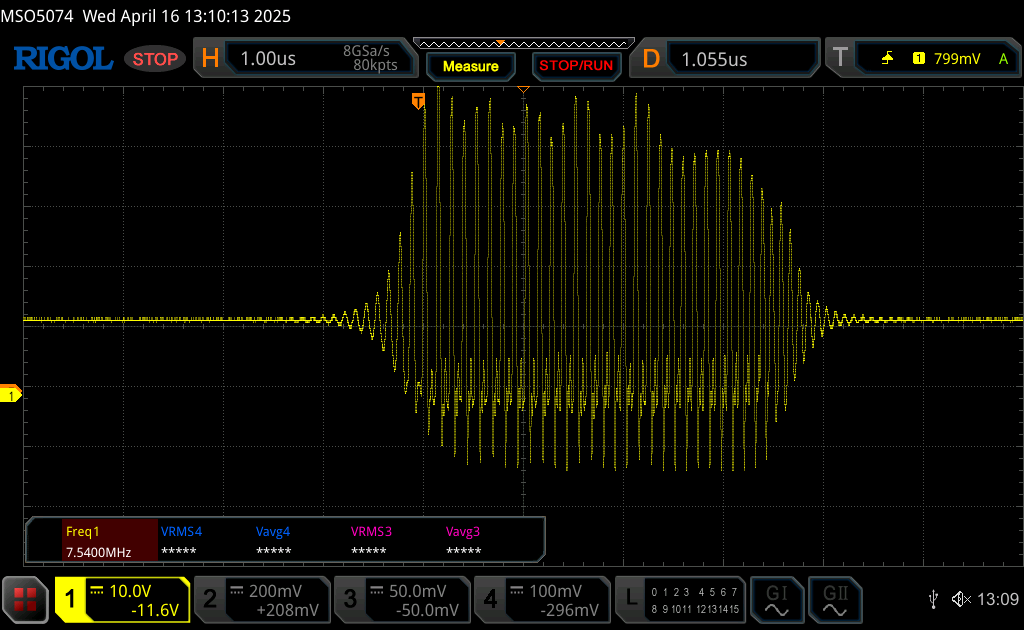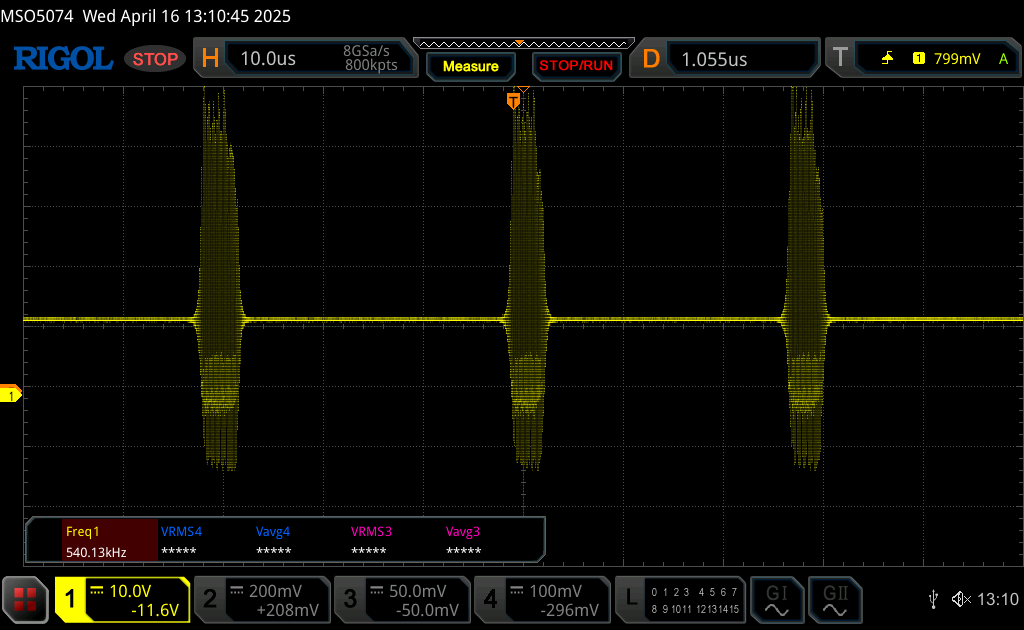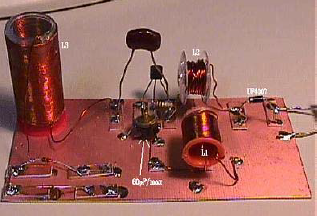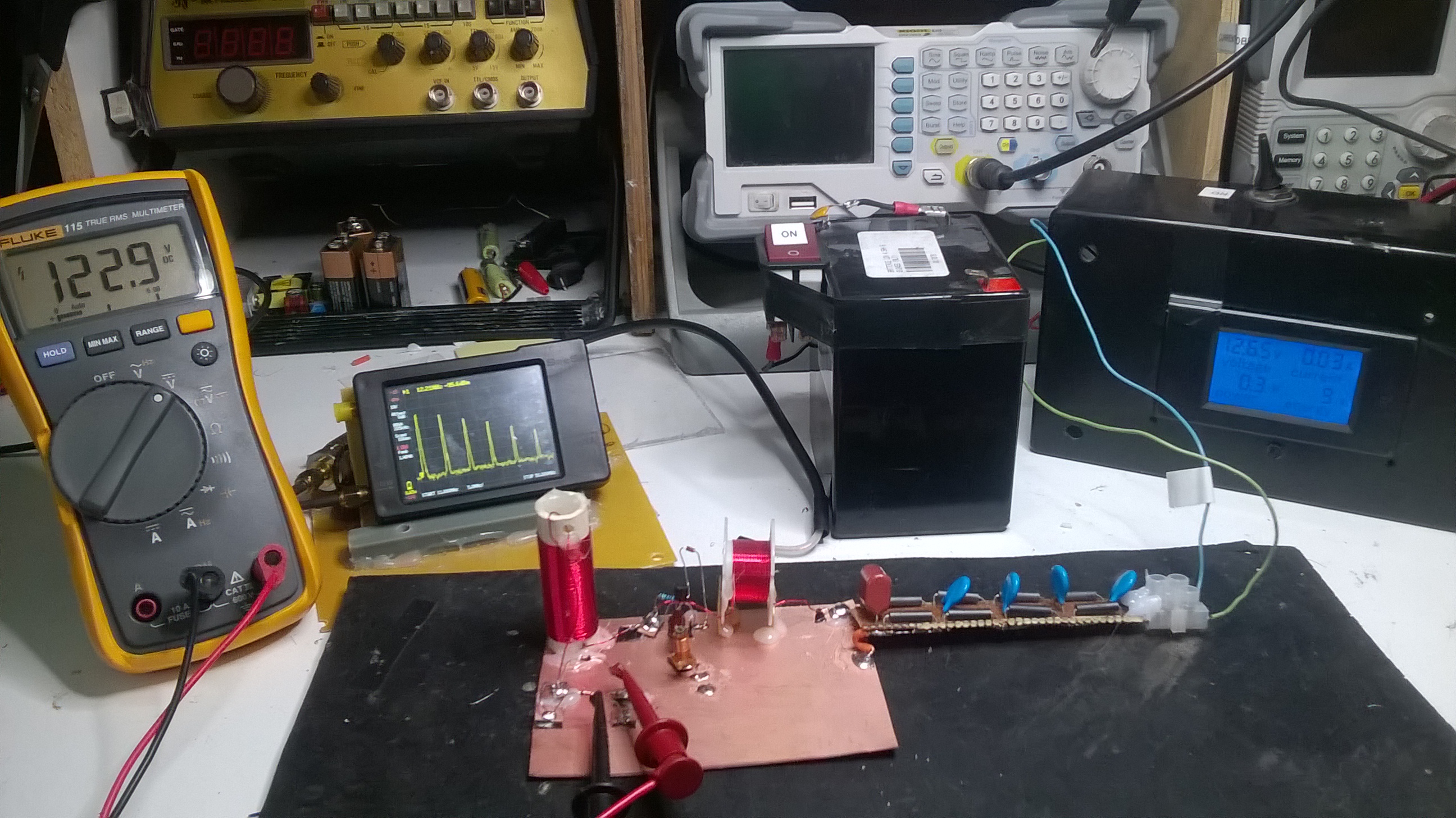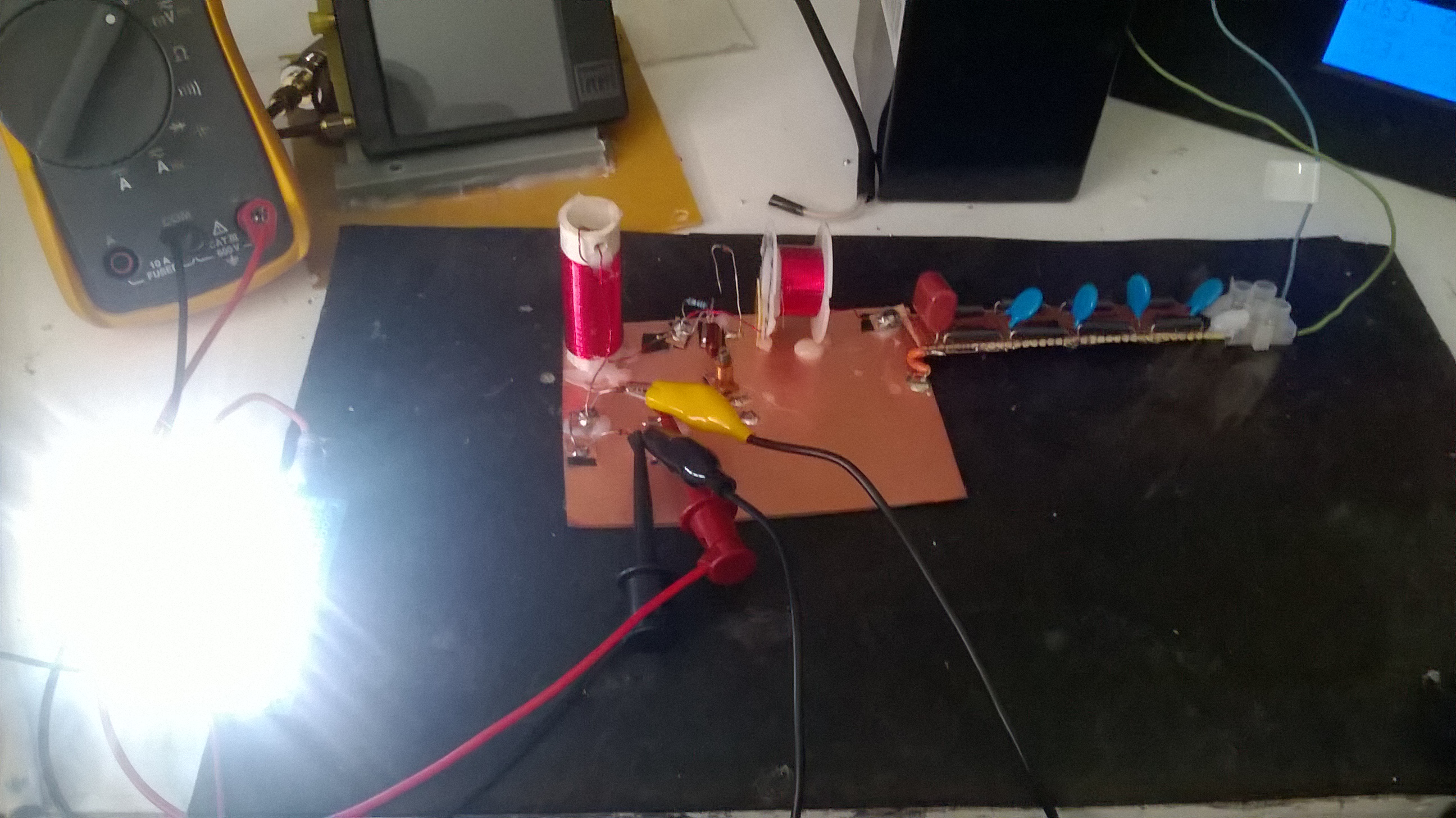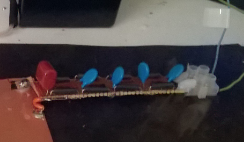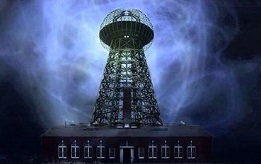In order to take good measurements without interference the following filter must be made for measurement through a 1 ohm resistor.
The oscilloscope with its high impedance input gives us a very accurate average DC reading.

Parts List.
C1 1uF 100V, Al Radial +/-20%, Part# 158491
C1-C4 0.01uF @ 1kv Ceramic
B1-B10 Ferrite Beads on leads of Z=86 ohms @ 10MHz and for measurement one 1 ohm carbon resistor.
You can see the string of 18 LEDs after the AV plug, followed by the filter, and finally the oscilloscope. This type of measurement provides great precision.
The current in the series LED string is derived from the voltage drop across the 1-ohm resistor. Each 0.001-volt drop across the 1-ohm resistor is equal to 0.001mA of current; therefore if the reading is 0.024 volts, the current is 24mA.
You can calculate the power of the LED string by knowing the forward voltage drop of the LED’s being used and multiply the number of LED’s times the voltage drop across one LED, times the current from your reading across the sample resistor.
Here is Dr Stiffler formula:

This formula can be used for most of your projects with LED strings.
Jagau

